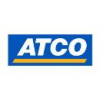Before you pitch your next proposal, take an elevator ride.

Quick!
Stop whatever you are doing and find your nearest elevator.
If you are reading this at work, this shouldn't be difficult.
If you work out of your home, you may have a bit more of a challenge.
Did you find your elevator?
Good.
Now take a ride, and time it.
How long did it take?
45 seconds?
57 seconds?
90 seconds?
For all of the engineering-type people out there... you don't have to be exact. 72.592 seconds is not the right answer. In fact, whatever time you measured (or guessed if you are not good at following instructions) doesn't really matter.
While not highly scientific, nobody seems to argue with me when I offer that the average elevator ride is about one minute in length.
Get this figure in your mind. Get to know what 60 seconds feels like.
What does that have to do with anything?
If you are selling something, or getting your proposal in front of an executive for a decision, you have approximately 60 seconds to make your whole case - from beginning to end.
I have found this to be true when I've stood in front of venture capitalists (Think Dragon's Den or Shark Tank without the cameras) seeking $2M in funding for a venture. It was true when I was at the executive table with a proposal to eviscerate our network and server infrastructure and replace it all. It was true when I was presenting the arguments to not cut certain projects over others.
If I can't be succinct in my proposals, I lose many of my opportunities for success.
When I started at my last organization, one of my team came to me and complained that the executive team could not make a decision. He had a proposal in front of them for months, and it never made it onto their agenda. It potentially could save the college a significant amount of money, but he needed some seed money to proceed.
I asked him to show me what he had given the executive team. He returned with a pile of paper (and I am not making this up) about 2 inches thick.
"None of them has even read it!" he complained.
"Do you blame them?" I replied.
The problem was not the executives. My team member had failed to understand how decisions get made at the executive level. There is no time to read extensive documentation. Let me repeat. There is no time to read extensive documentation.
We then took the 2 inch pile of paper and reduced it to one sheet.
For lack of a better title, we called it an "Issue paper".
The top portion described the issue. Singular . If there are more than one issue, create an issue paper for each.
The middle portion described the impact (risks and benefits) of:
- doing nothing
- proceeding with various options (phased, all at once), self funded, financed, partnerships, etc.
The third and final section contained our recommendation.
This may seem daunting to do at first, but it really is achievable. Keep in mind the sixty seconds... It should take you that long to read it.
Don't fret if you haven't got all the details crammed into the one page. Executives are used to asking for further details. That's what your 2 inch pile of paper is for.
Back to our story.
We presented this issue paper, along with four other issues papers for things that had been lingering, and to the surprise of my new team, they were all passed.
The issue paper itself is not magic. You need to have a valid request.
What it does is convert the language of your proposal to the language of the recipient - in this case the executive team, and shows you respect their most precious commodity - their time. It also shows that you are prepared when questions get asked, and confident enough to make quality recommendations.
So the next time you are writing a proposal, go hop on the elevator and see if you can articulate the issue, the impact and your recommendations before you reach the top floor.
If you can't, rewrite your paper and try again. Repeat until successful.
_____________________________________________________________________________________________________
Image: MS Office Imagebank
This post has been previously published on LinkedIn
About the Author:

I'm convinced that IT leadership needs to dramatically change how IT is delivered rather than being relegated to a costly overhead department.
In addition to transforming IT in my role as CIO, I look for every opportunity to talk about this... writing, speaking and now blogging on BeBee (https://www.bebee.com/@kevin-pashuk) , LinkedIn, ITWorld Canada, or at TurningTechInvisible.com.
I also shoot things... with my camera. Check out my photostream at www.flickr.com/photos/kwpashuk
Articles from Kevin Pashuk
View blog
There's a lot of confusion out there. · By "there", I mean where you are... and I am... · ... and th ...

In preparing for my recent post: Innovation starts with your users... · I got distracted. · Not tha ...

At some point in your career as CIO, you will need · explain the services that are provided by the · ...
Related professionals
You may be interested in these jobs
-
Indigenous Summer Student Program 2024
Found in: Talent CA C2 - 1 week ago
ATCO Whitehorse, Canada Full timeóki, negha dágondíh, je aa haanach'e, kwékwé, tân'si, âumba wathtiché, dànít'ã-da, edlánete-a, boozhoo, tawnshi, aba washded, kiɁsuɁk kyukyit, tungasugit, welcome · ATCO is proud to announce our Indigenous Summer Student Program. Across Canada, ATCO is committed to building and m ...
-
cook
Found in: Talent CA 2 C2 - 1 day ago
Nori Japanese Restaurant Nanaimo, CanadaEducation: Secondary (high) school graduation certificate · Experience: 2 years to less than 3 years · Work setting · Restaurant · Tasks · Prepare and cook complete meals or individual dishes and foods · Prepare dishes for customers with food allergies or intolerances · Plan menu ...
-
Climate Action Specialist
Found in: beBee S2 CA - 1 week ago
Town of Smithers Smithers, Canada Full time· Position: CLIMATE ACTION SPECIALIST The Town of Smithers is currently seeking qualified applicants for the position of Climate Action Specialist. This is a full-time, exempt position, offering leave coverage for a 1-year term. The Town offers a competitive salary of $67,980 an ...




Comments
Dean Owen
7 years ago #6
Dean Owen
7 years ago #5
Ken Boddie
7 years ago #4
Paul Walters
7 years ago #3
Kevin Pashuk
7 years ago #2
Thanks for commenting Anees Zaidi. I find the art of presenting sadly missing in our educational systems. "Presenting" is not about PowerPoint, but being able to succinctly get our message out.
Kevin Pashuk
7 years ago #1
You are welcome Rafiqul.